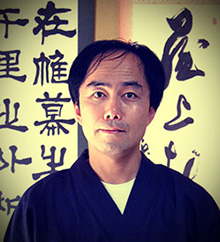How Does Kanji Work?
Convert your name or your favorite word into Kanji! Why not use it for T-shirts, stamps, stickers or tattoos?
Convert your name or your favorite word into Kanji! Why not use it for T-shirts, stamps, stickers or tattoos?
Last updated : 28.1.2021
Author : Akira Katakami
Learning a new language is always challenging. Grammar rules shift, sentence construction is an obstacle and meanings often interchange between contexts. Then, different alphabets and scripts come into play. This is the case with learning the Japanese language, especially with their writing system where Kanji is their primary script and it is supported by the phonetic alphabets of hiragana and katakana.
Read on to know how Kanji works!
Radicals make up a Kanji and a Kanji is made up of radicals. The result is that multiple radicals can be combined to create many new characters. All the characters are either a single radical or multiple radicals. Instead of memorizing all Kanji characters – and their various meanings – you can choose to learn radicals first. That way, picking apart what a character means comes easily.
However, radicals do change shape when tacked onto another radical to make a Kanji character. It’s best to familiarize yourself with these radicals, as there are only 214 common ones! A Nihongo student can build up knowledge from that foundation.
People write Kanji characters in specific stroke order. While it may seem unimportant, it’s an essential thing to know. Once you know how to read Kanji, you’ll also find it hard to read Kanji that’s written with wrong stroke orders. Starting in the wrong place can make your Kanji hard to decipher for many.
Learning the strokes and stroke order is also an efficient way to learn Kanji faster. Familiarizing yourself with characters while training your hand to write strokes properly is a good technique.
Kun-yomi and on-yomi are the two different readings for Kanji. For a Japanese character reading, you use kun-yomi. One can use kun-yomi with native Japanese words and frequently, single-character Kanji.
For Chinese readings, you use on-yomi. Multiple Kanji characters and characters that originate from Chinese use on-yomi.
So with all these in mind, how does one read a piece of Japanese text? Traditional novels and Japanese literature will generally have a vertical orientation that is read from top to bottom and from left to right and the pages progress to the left. The horizontal orientation is normally used for newer writings, foreign language-related writings, or scientific and mathematical papers. These are read as you would with any text written in English.
One advantage of Kanji being open to either orientation is that it is very efficient. For example, a regular Japanese newspaper will look very chaotic to the untrained eye as parts of it will be written horizontally and others vertically but this is helpful in presenting information easily.
Like we said above, Kanji largely depends on the context. Some people write stylized Kanji characters for specific situations. There are still simple, generic characters applicable to any situation. However, it’s best to familiarize yourself with many to read and write Kanji with ease.
While learning the whole of Nihongo can be challenging, we hope that this guide helped. Remember to tackle Kanji in chunks of different elements: from radicals, their building blocks, to strokes, and finally, to different readings, meanings, and contexts. With enough focus and technique, you can understand how Kanji works!

Seigakudou(静岳堂)
Seigakudou(静岳堂), a working calligrapher and native Japanese, will write your name in Kanji. Rather than a computer font, your kanji name will be hand-brushed by a professional calligrapher.

Akira Katakami(片上明)
The translation from English to Japanese will be undertaken by a professional native Japanese translator with a kanji proficiency qualification, you can be sure of an error free standard. Also, an explanation of your kanji name will be provided in English.